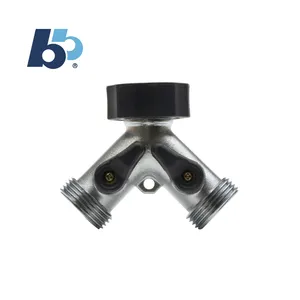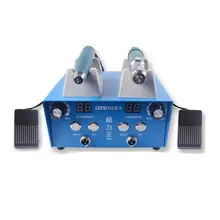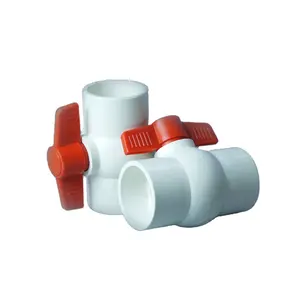The ball valve 1 is a cornerstone in fluid management systems, renowned for its spherical disc that facilitates seamless flow when open and a secure seal when closed. The adaptability of the ball valve 1 across a spectrum of applications, from household plumbing to sophisticated industrial systems, underscores its importance in fluid control technology.
Types and Sizes of Ball Valves
Diversity in types and sizes is a hallmark of ball valves, making them suitable for a wide array of applications. The 1 2 ball valve is a staple in home plumbing systems, offering an economical and effective solution for small diameter piping. In contrast, the 2 1 2 ball valve is engineered for higher volume flow, common in industrial settings. Precision applications may call for the 1 1 4 ball valve or the 1 1 4 in ball valve, which provide meticulous control over flow rates. The 1 2 inch ball valve strikes a balance, being versatile enough for both commercial and industrial use. Specialty valves, such as the 1 1 2 pvc ball valve, are particularly valued in the chemical processing industry for their corrosion resistance and ease of integration into existing PVC systems. Each variant is designed with specific operational contexts in mind, ensuring optimal performance and reliability.
Structure and Operation
The anatomy of a ball valve is simple, comprising a valve body, a rotatable ball with a central bore, and a handle to adjust the ball's position. For instance, in a 1 inch ball valve, the ball's diameter is matched to the connected pipe's diameter, ensuring seamless flow and control. The handle's design allows for a quick 90-degree turn, enabling rapid switching from open to closed positions, which is particularly useful in emergency shut-off scenarios. The internal components are precision-engineered to maintain integrity under varying pressures and temperatures, contributing to the valve's robust performance.
Materials and Properties
Material selection for ball valves is dictated by the application's demands. Stainless steel is a preferred choice for its robustness and resistance to extreme conditions, making it ideal for high-pressure and temperature applications. Alloys and carbon steel are selected for their strength and are commonly used in demanding sectors like oil and gas. Aluminum alloys offer a lightweight yet durable alternative for less critical applications. The color-coding of valves serves as a functional identifier, with colors like red often signifying emergency shut-off valves, thus enhancing safety protocols within industrial environments.
Business Usages and Applications
In the realm of industry, ball valves are omnipresent, integral to processes that demand precise fluid control. The oil and gas sector relies on the ball valve 1 for its robust sealing capabilities under high-pressure conditions, while manufacturing processes depend on the precise flow regulation offered by a 1 1 2 valve to maintain product consistency. Water treatment facilities benefit from the non-corrosive nature of 1 1 2 pvc ball valves, and the food and beverage sector requires the hygienic properties of stainless steel valves. These valves are not just components but are pivotal in enhancing safety, efficiency, and operational continuity, thereby delivering substantial business value.
Functionality and Features
The ball valve 1 is designed to regulate fluid flow with minimal pressure loss. Its straightforward design allows for both isolation and flow regulation, making it a versatile choice for various applications. Enhanced safety features, such as locking mechanisms found on some 1 inch gas brass ball valves, prevent unintended operation, while options for automation, such as pneumatic or electric actuators, extend the valve's utility to sophisticated control systems. These features underscore the valve's adaptability and its capacity to meet diverse operational demands.
Advantages and Benefits
The ball valve 1 offers numerous advantages, including operational reliability and ease of maintenance. Its design simplicity ensures fewer points of failure and a tight seal, contributing to a prolonged service life and reduced system downtime. The rapid actuation capability is crucial for quick system isolation, which is essential for maintenance or in emergency situations, thereby bolstering system safety and efficiency.
How to Choose the Right Ball Valve
Selecting the appropriate ball valve is a critical decision that hinges on understanding the specific requirements of your system. Considerations include the valve's size, material composition, and the nature of the fluid it will regulate. For moderate flow control, a 1 1 2 inch ball valve may be suitable, whereas a 2 1 2 inch ball valve would be better for systems with larger volume demands. The media's temperature and pressure are also decisive factors, influencing the material selection and valve design to ensure compatibility and longevity.
How does the ball valve 1 ensure safety in industrial applications?
The ball valve 1 is synonymous with safety in industrial settings, thanks to its sturdy construction and reliable sealing. Materials capable of withstanding high pressures and temperatures, such as stainless steel and carbon steel, are used to prevent leaks and potential ruptures. Furthermore, adherence to safety certifications confirms that these valves meet stringent industry standards for safe operation.
What maintenance procedures should be followed for ball valves?
Ball valve maintenance is straightforward, focusing on cleanliness and regular inspections to avert buildup and wear. Valves in high-use or critical applications may necessitate a more rigorous maintenance regimen. Essential maintenance tasks include lubricating moving parts and verifying the integrity of seals and gaskets, which are vital for maintaining the valve ball 1 2's performance and extending its service life.
Can ball valve 1 be customized for specific industrial needs?
Customization is a key feature of the ball valve 1, allowing it to meet the exacting requirements of diverse industrial applications. Manufacturers can modify port sizes, select suitable materials, and incorporate additional features such as locking mechanisms or various types of actuators. This bespoke approach enables businesses to acquire valves that are precisely tailored to their system's specifications and operational demands.












































 浙公网安备 33010002000092号
浙公网安备 33010002000092号 浙B2-20120091-4
浙B2-20120091-4